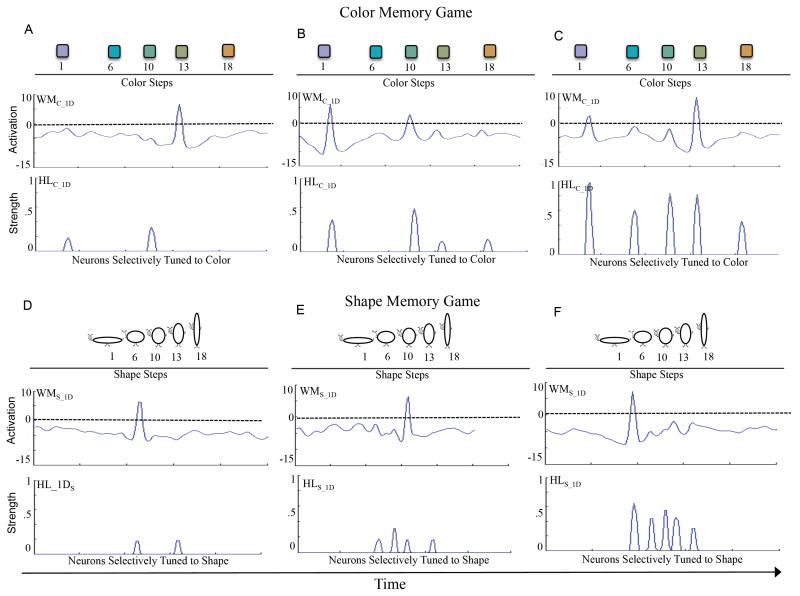Figure 5.
Shows simulation of a one-dimensional DNF model of the color memory game (top portion) and shape memory game (bottom portion). The top of panel A shows the metric organization of the color values used in the color memory game. This is the input to a one-dimensional working memory field for color (WMC_1D), shown just below. WMC_1D is coupled to a Hebbian layer for colors (HLC_1D). Panel A also shows the model early in learning, after exposure to just a couple of colors in the color memory game. At this time, the model has acquired a couple weak memories in HLC_1D. Panel C shows the model a bit later in learning. Now, the model has acquired more memories in HLC_1D, some of which are robust. It is also maintaining multiple items in WMC_1D, which helps the model acquire even more robust memories in HLC_1D. By the end of learning, late in the color memory game, the model has acquired robust memories in HLC_1D for all the colors in the color memory game.
The top of panel D shows the metric organization of the shape values used in the shape memory game. These are noticeably closer than those used in the color memory game, even though the distribution is the same. These values were input into a one-dimensional working memory field for shape (WMS_1D). Panel D also shows the model early in learning, after exposure to just a couple of shapes in the shape memory game. The model has a couple of weak memories in the associated Hebbian layer, HLS_1D. Panel E shows the model a bit later in learning. The model has acquired memories for several shapes in HLS_1D. Notice that WMS_1D is only maintaining one item, as compared to two in WMC_1D at the same time in learning in the color memory game (see B). This is because the closeness of the shape values creates interference in WMS_1D, effectively limiting it to remembering only one item at a time. This, in turn, hinders the ability of the model to form robust memories in HLS_1D during the course of the shape memory game (F).

